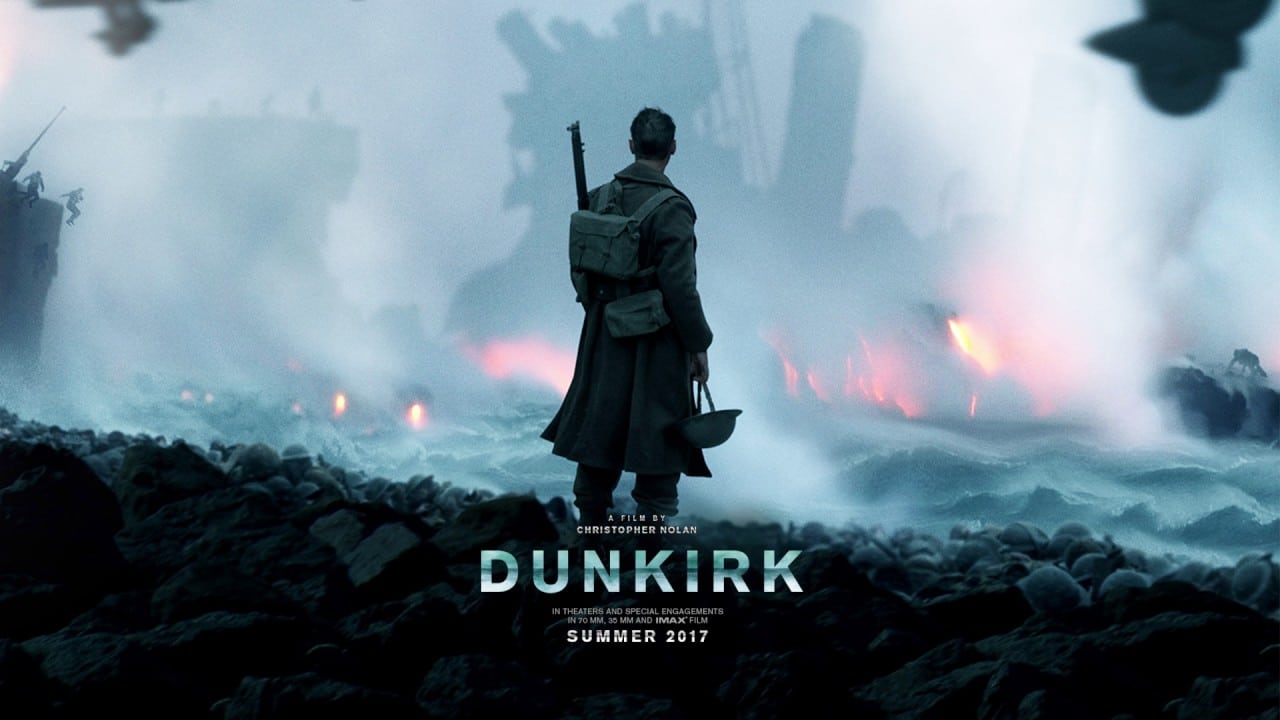By Kyeland Jackson —
I walked out of the IMAX theater for “Dunkirk” and didn’t know what to think. Was “Dunkirk” amazing? Was it only alright? But as I’ve recounted the movie, the experience which was that movie, it’s clear Christopher Nolan has directed another gem.
His movie is unlike other war films, such as “Saving Private Ryan,” “Apocalpyse Now” or 2016’s “Hacksaw Ridge.” Nolan shuns the archetype of the gory, explosion-packed movie to his benefit, succeeding through a compelling plot, characters, score, cinematography and theme.
Plot
The plot describes the World War II battle of Dunkirk, France. There, hundreds of thousands of allied troops were stranded by German forces. We follow Tommy, Mr. Dawson and Collins who fight for survival on the land, sea and air respectively. Their stories intertwine as they try to survive deadly assaults and try to maintain some hope. Often, their hopes are dashed.
Through the varying perspectives, audiences earn an rounded perspective in “Dunkirk.” Seeing the battle through the land, sea and air lends an invaluable perspective to how the battle rages from differing fronts. Their backgrounds are irrelevant, their names — even less so. By focusing on each terrifying moment, the audience realizes that information doesn’t matter. Through focusing on each moment, the audience is dropped into the fray, like these soldiers, to realize only survival matters.
Characters
The movie’s characters are made purposefully vague, and it works to Nolans’ benefit. We don’t learn much past their first names. Some, like Murphy’s character, give no name. Instead, we learn all we need from acting. Fionne Whitehead, Damien Bonnard, Mark Rylance, Tom Hardy and Jack Lowden portray central characters in arguably the hardest way: with little to no words.
The shock, terror, hope and apathy to death is acted clearly with their faces and sparse words. It’s hard to portray emotion without words. Harder when the role is your Hollywood debut, as it was for Whitehead who plays a main role as Tommy.
But they did it, and they did it well.
Score
Hans Zimmer is renowned as an accomplished film composers. That’s for good reason, as Zimmer’s score for the film evokes the despair and tension laid bare through the plot. Droning organ noises, screeching keys and deep chords grip you. Meanwhile, ticking noises keep the tension high and you on edge. Zimmer has excelled in scores, succeeding in the Nolan’s “Batman” films, “Interstellar” and “The Lion King.” He does it again with “Dunkirk,” catching the movie’s theme and accentuating it to resonate with audiences.
Camera
This is the first time I’ve included cameras to judge a movie, but Nolan’s use of cameras lends to the experience. The camera’s shot composition place audiences in the movie, mounting them at planes’ controls, in ships’ depths or on the sands of a beach being bombed. The dizzying camera throws you into the aggravation, terror and disorientation of the battle, and I love it.
Experience
“Dunkirk’s” pacing is disorienting, perhaps purposefully so. Rather than a linear story, timelines jump back and forth to cross and weave together. The story keeps audiences on edge from the beginning and accentuates their dread with booming sound effects, Zimmer’s tense score, dizzying camera shots and masterful acting throughout. That tension and despair envelops audiences throughout the film and keeps them there.
It’s a film you must see in IMAX to experience. Not just because the screen is bigger; Nolan shot more than half of the film through IMAX cameras, used authentic and replica planes and boats in filming and filmed where the battle of Dunkirk happened. IMAX viewing is a necessity for the full experience.
“Dunkirk” isn’t the action movie you’re expecting. But it’s nothing short of brilliant, using intimate storytelling, masterful acting and genius cinematography. It deserves to be listed among war movie greats and Nolan deserves an Oscar.
I plan to see “Dunkirk” in IMAX again soon. You should do the same.





